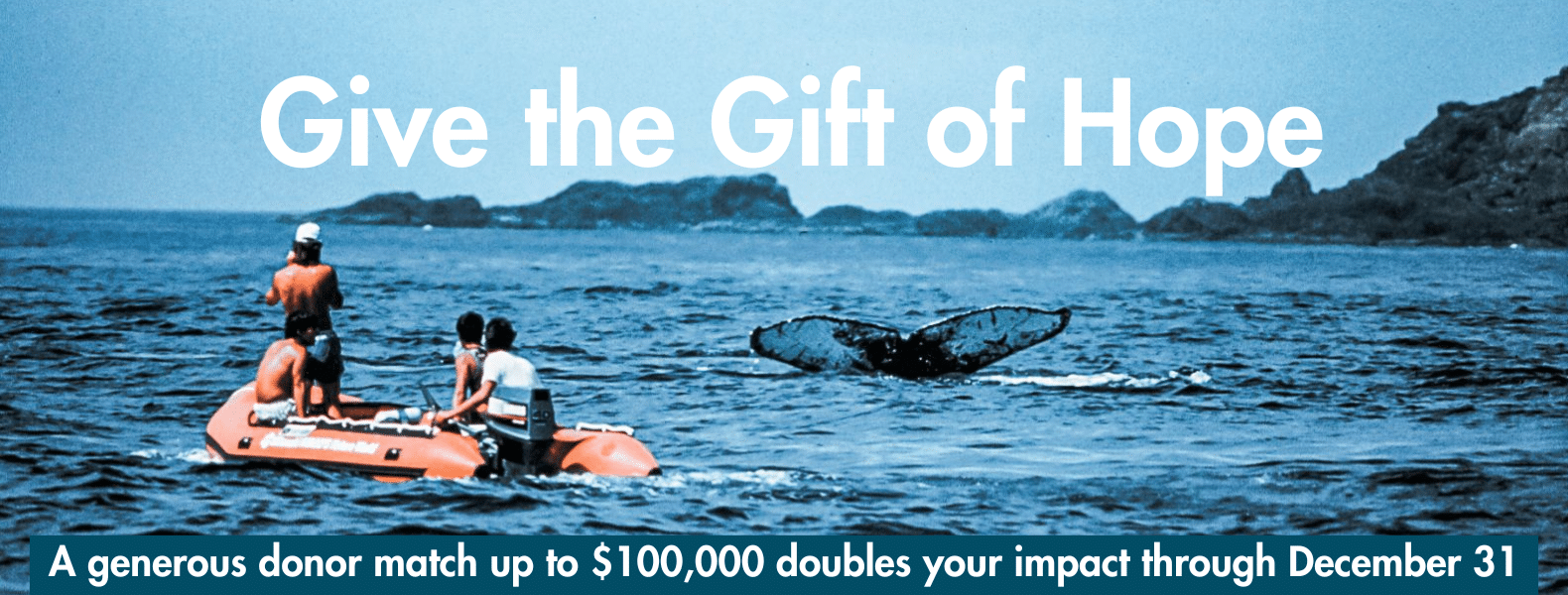On any given day, approximately 50,000 commercial maritime vessels navigate the world’s seas and waterways providing food and supplies to global communities. Adding recreational and unlicensed vessels to the mix, ship traffic increases exponentially.
Vessel collisions with marine animals, also known as ship strikes, are one of the 5 Major Threats Pacific Whale Foundation (PWF) works to mitigate through ongoing research, education, advocacy, and legislative and community lobbying.
A ship strike is defined simply as a collision between any type of boat and a marine animal in the ocean. All sizes and types—from large commercial vessels like container and cruise ships to 10-foot jet skis—have the potential to collide with marine life. It’s estimated that vessel strikes injure or kill hundreds of thousands of marine mammals annually, with baleen whales at greatest risk due to their size.
The largest stressor to cetaceans such as whales and dolphins, as identified under the umbrella threat of “vessel traffic,” this threat includes direct (vessel strike itself) and indirect consequences, such as noise and cumulative disturbance that can lead to chronic stress affecting cetacean reproduction.
Noise Pollution
Noise pollution: Vessels generate noise that can interfere with the communication and navigation of whales and dolphins. This can disrupt their behavior, feeding, and mating patterns and can also cause stress and hearing loss.
Physical Injury
Large ships can pose a direct threat to whales and dolphins by striking them, which can cause serious injuries or death. Propellers and other parts of a vessel can also cause serious injury.
Habitat Degradation
Vessel traffic can cause habitat degradation by disturbing sediment and sediment-dwelling organisms, which can impact marine animals’ food sources. In areas with high vessel traffic, there can also be increased levels of pollution and decreased water quality, which can have negative impacts on marine-life health.


Displacement
Dolphin and whale species may avoid areas with high levels of vessel traffic, which can lead to changes in their migration patterns, distribution and behavior. This can have negative impacts on the animals’ reproductive success, survival and overall well-being.
As marine mammals, such as blue whales, North Atlantic right whales and baleen whales (humpbacks), manatees and dolphins, come to the surface to breathe after sustained periods of submersion, they are often simply unseen by approaching vessels or surface with little or no time for operators to avoid a collision. Whales in particular often surface for feeding, socializing, courtship, mating and other activities, making these cetaceans especially vulnerable to impacts from vessel activity in whale habitats that overlap with established shipping lanes.
Risk of Collision with Marine Life
Watercraft collisions with marine animals are an increasing threat as human population growth accelerates the demand for goods and services across the globe. PWF, a long advocate of ship-strike reduction measures, conducts research to better understand whale and dolphin distribution and abundance with the goal of influencing mitigation strategies including approach and speed limits when marine mammals are present, designated onboard lookouts and informed analysis of commercial vessel routes.
As an example of potential vessel impacts to cetaceans, an estimated 40 whale-watch tour companies operate in the waters of Maui Nui (Hawai’i) annually. Over the years, PWF has conducted marine research to determine the best operational practices for boaters during whale-viewing season.
One targeted study within the four-island region of Maui County, which comprises a large swath of the Hawaiian Island Humpback Whale National Marine Sanctuary (HIHWNMS)—a heavily trafficked area during humpback whale season—found speed reduction effective in reducing marine mammal-vessel collisions. PWF researchers discovered a threefold reduction in initial encounter distances when vessel speeds were reduced to 12.5 knots or less when in the vicinity of targeted marine species. Collaborating with regional stakeholders, such as HIHWNMS, the Department of Land and Natural Resources, and general ocean users, it was agreed to promote revised voluntary vessel-operator guidelines including a speed limit of 15 knots or less, and slower (6 knots or less) when approaching and departing whales within 400 yards.
PWF and HIHWNMS have championed voluntary vessel-operator guidelines for years in an effort to mitigate vessel collisions within the Hawaiian Islands humpback whale sanctuary. With support from conservation partners such as the National Oceanic and Atmospheric Administration (NOAA) and the on-water community, continued attention to science-backed guidelines for ocean users can protect vulnerable marine mammals from ship strikes for generations to come.
PWF Scientific Papers on Risk of Collision
Research Partners
MAKE A PLEDGE TO COMBAT
THE 5 MAJOR THREATS


